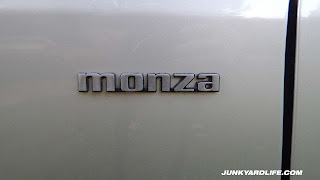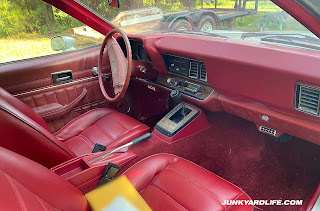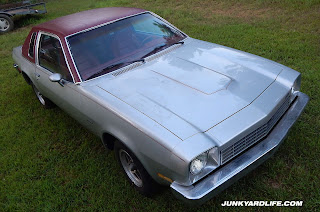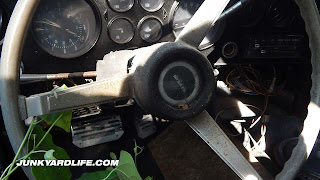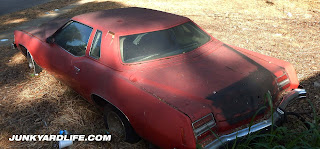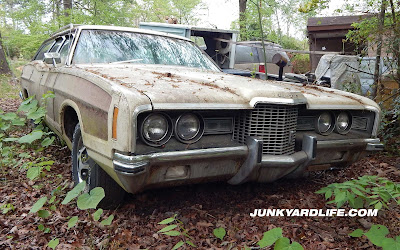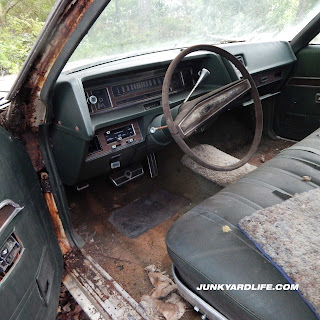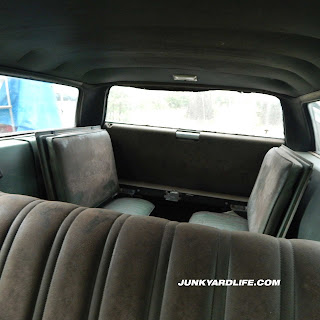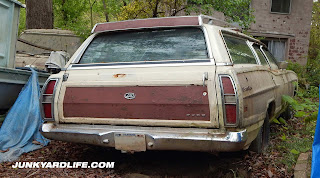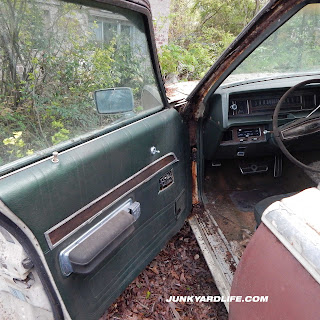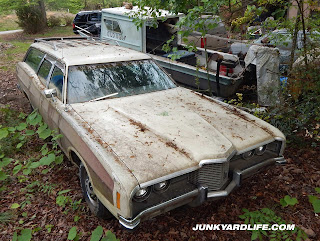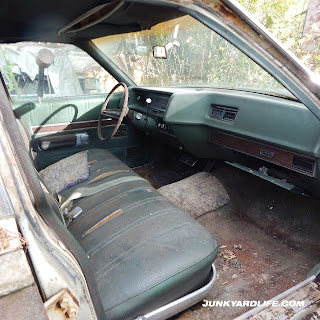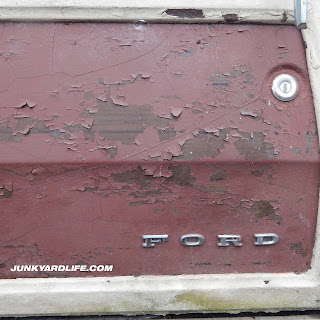
Junkyard Life’s Mini Carlo
Me: (add excited high-five hand position) “I got a Monza!”
Everyone so far: “A Mazda?”
Me: “No, no. A Monza. It’s a Chevrolet. Mon-Zah”
Everyone so far: “Mazda?”
Me: “No! ‘Monza’-like the guy’s name on Street Outlaws….
Everyone so far: “Ohhhh. Monza!”
Me: (sigh)
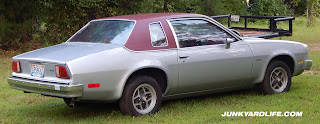
So I did. I bought a 1975 Chevrolet Monza (not Mazda). I call it my Mini Carlo. A car seemingly forgotten except by a niche market of 1970’s car guys, hot rodders, and that one guy on TV who successfully identified himself more so than the car that probably somehow inspired the name.

Why a 1975 Monza? Well, Junkyard Life’s close family friend, we call The Aimee Connection (see Fun Facts), led us to it. Actually, she acquired the compact Chevy several years ago. This Monza was bought new by her family and gifted to her over twenty years ago. Aimee restored the car, then stashed it! Now, years later, she decides it is time for it to un-hibernate and move on to another home. Mine.

Monza means fast, right?
What have we learned about Chevrolet Monzas? This car was offered in a hatchback with a 305-V8 and a 4-speed! My goodness! Traction was probably not part of that package. I imagine that it would have barbecued that poor 13-inch tire. Actually, I know it would (see Fun Facts). A whole cavalcade of power plants were offered through the few years that Chevrolet gave us the Monza. Ours is a garden variety 140 cubic-inch, four cylinder with an automatic. So, no chiropractor needed here. Not an ounce of neck snapping acceleration. If we get right foot happy, we may need to turn off the A/C to get a few more horses out of that tiny motor. Don’t think we would not dare to do it. Zero-to-sixty in sometime this month.

Almost famous
The famous (semi-famous?) Monza 2+2 made an impact on the road racing world. Is ours a 2+2? No, ours is a Towne Coupe, otherwise known as the notchback. It has a trunk instead of the hatch rear. If it were born a hatchback, the rear tail light design would be hard to not like. Why did the Vega get all the hot press and the limelight? The Monza holds no secrets like the Vega. What happens in Vegas stays in Vegas. (Editor’s Note: We told Ron that expression was a reference to wild trips and avoiding consequences in Las Vegas, Nevada...not the car.)

Little Snoot Coupe
Our little coupe was purchased new in Bessemer, Alabama by Aimee’s grandparents. A bright red Charger works for some grandparents, but hers opted for a smaller, more fuel efficient car. Equipped with air conditioning, automatic transmission and a sporty vinyl top. This car promised to be the gas saver the oil embargo demanded. Those who could not afford to buy a new economy car in that era inadvertently chose to buy more fuel. Aimee's grandparents picked Code 13 Silver paint for the outside and a saucy red for the inside. When Aimee took ownership, the Monza, though faded, still had low miles (30K!). While restoring the car, Aimee added the perfectly placed pin stripes. Monza seat covers were not being reproduced at that time, so Aimee had them made using the original pattern. New carpet and a shiny new vinyl top finished the Monza off nicely. The American Racing wheels surprisingly were not added by her, they were added by her grandparents when the car was still new! Notice how the pin stripes on the hood bring out the styling on the subtle scoop design. It reminds us of the L88 Corvette hood design, now that Aimee brought the scoop to our attention with the pin stripes.

The Great Monza Thinker
What will we do with this 1975 Chevy Monza? An LS swap (Keith’s idea) would be a death trap. An endurance car to run 24 Hours of Lemons* at Barber Motorsport Park (Jody’s idea) seems like a chance of not emerging with the whole car, or…or...or the best idea (Ron’s idea) to drop in a 4.3 liter Chevy motor and a Roots-type blower. What to do? I feel like we keep coming back to that 4.3 thing. Great idea, guys!
Ron Kidd
— Junkyard Life: The Story Beneath the Rust

Monza Fun Facts:
- The Aimee Connection is our reference to Aimee for being so instrumental in finding us cool cars! This is the third one! Sorry, rival car websites…we saw her first! She was a known Chevy girl and then married a guy who races foreign cars. You know, if it was a Mazda…they may have kept it!
- The Chevy Monza had a few GM cousins. The Buick Skyhawk, Oldsmobile Starfire, and Pontiac Sunbird all offered the buyer a fuel friendly choice. These were known by GM as H Bodies.
- My brother and I had a friend named Noel with a 1976 Monza hatchback with a 4-speed and a 350 swap. We got eaten alive by cars we should have outran, because of that traction thing. One night Noel stayed in the throttle, despite the excessive wheel spin and filled the car with a smoke show that would make Cheech and Chong proud.
- John DeLorean called the Chevrolet Monza hatchback the “Italian Vega” because of its Ferrari 365 GTC design cues.**
- Monza fans note the notchback is over a hundred pounds lighter than the 2+2 model.
- The success of the Mustang II in notchback form had something to do with the inception of the Monza Towne Coupe. Chevrolet…late to the game. Does this remind anyone of the success of the 1964 ½ - 1966 Mustangs? Oh, history…why must thy repeat thyself?
- The Monza was slated to have a rotary engine, but alas…it never happened. That would have been high-revving fun!
- I (Ron) actually went to the body shop with Aimee to toss ideas about the accent stripes when the Monza came out of the paint booth. Though this was several years ago, I seem to remember thinking that this was going to look great!
*Editor’s Note: Ron mentioning the 24 Hours of Lemons Race is a real thing. It sounds like a lot of fun. We keep coming up with cars that are not quite perfect. Ron can’t fathom the idea of putting a vintage Pontiac on the track.
** Editor’s Note: How did Ron work a John DeLorean quote into a Chevrolet Monza story?










